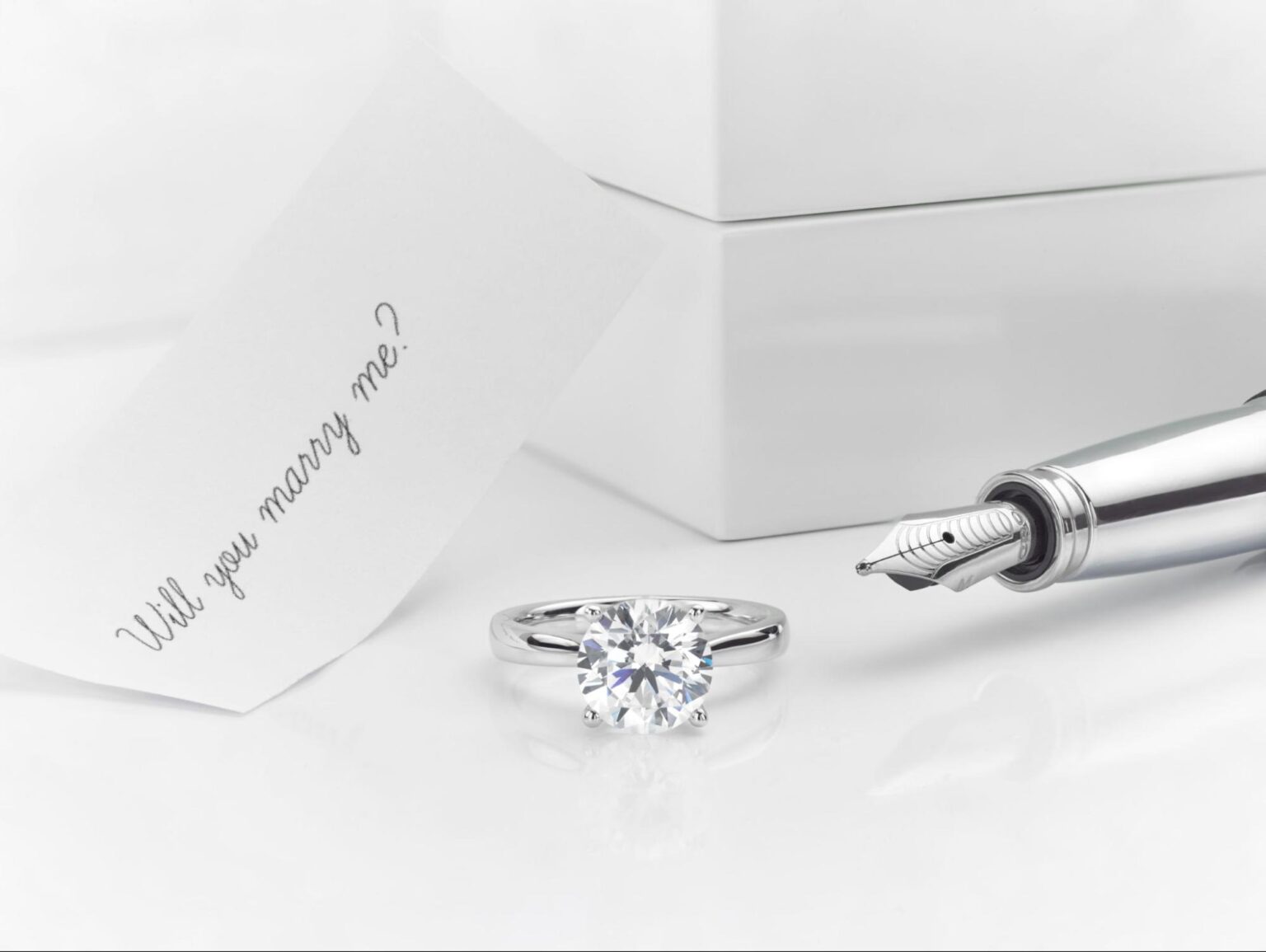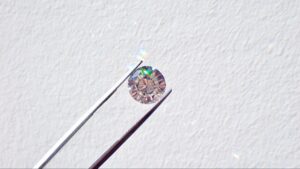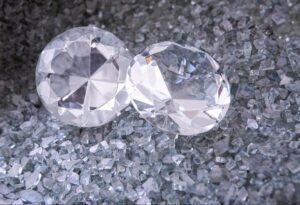
The Pros and Cons of Lab-Grown vs. Natural Diamonds
Diamonds have long symbolized luxury, love, and enduring beauty. Traditionally, natural diamonds have been the only option for those seeking these precious gems. However, lab-grown diamonds have gained popularity in recent years as a more ethical and sustainable alternative.
What is A Lab Grown Diamond?

Even though there is a misconception among some people that a lab-grown diamond isn’t a “real” diamond, it is a real diamond.
At the root of it, a lab-grown diamond is chemically and optically the same as a natural diamond—it’s just made a little differently. Lab-created diamonds are still the hardest gemstones and are of high quality.
The process of growing lab-grown diamonds typically involves one of the following methods:
-
Chemical Vapor Deposition (CVD)
In the CVD process, a small diamond seed is placed in a chamber filled with carbon-rich gasses. These gasses are then heated to extreme temperatures, causing carbon atoms to bond and crystallize onto the seed, gradually forming the shape of a larger diamond.
-
High-Pressure High-Temperature (HPHT)
In the HPHT process, a small diamond seed is exposed to high temperatures and pressures that mimic the conditions under which natural diamonds are formed deep within the Earth. The carbon atoms in the seed rearrange to form a larger diamond crystal.
The Pros and Cons of A Lab Grown Diamond
Choosing between lab-grown and natural diamonds ultimately depends on your personal values, budget, and priorities.
Pros
- Ethical and Sustainable: Lab-grown diamonds are created in controlled environments—eliminating concerns related to unethical mining practices and environmental damage.
- Cost-Effective: Lab-grown diamonds are generally more affordable than their natural counterparts, allowing consumers to get more for their money.
- Customization: These diamonds can be created with specific characteristics, such as size, color, and clarity, offering a wide range of options for consumers.
- Innovation: Technological advances continuously improve the quality and availability of lab-grown diamonds, expanding the market.
Cons
- Lack of Rarity: Lab-grown diamonds lack the natural rarity and geological history of natural diamonds, which some buyers may find less appealing.
- Perceived Value: Some consumers may still associate natural diamonds with higher value and sentimentality.
- Energy Consumption: The process of growing diamonds in a lab requires significant energy inputs, although this is improving with more sustainable practices.
The Benefits of A Lab Grown Diamond
- Ethical Peace of Mind: Lab-grown diamonds offer a guilt-free option for those concerned about the ethics of the diamond industry.
- Environmental Friendliness: These diamonds have a lower carbon footprint than mined diamonds, aligning with sustainable living principles.
- Accessibility: Lab-grown diamonds provide a more budget-friendly option for individuals and couples who want a beautiful diamond without breaking the bank.
The Pros and Cons of A Natural Diamond

Here are the ways a natural diamond differs from a lab-grown one.
Pros
- Rarity and Uniqueness: Natural diamonds are formed deep within the Earth’s mantle over billions of years, making each one unique and special.
- Inherent Value: Natural diamonds often retain or increase in value over time due to their rarity, making them a potential investment.
- Tradition and Symbolism: Natural diamonds have a long history of being associated with love, commitment, and status, making them a cherished choice for engagement rings.
Cons
- Ethical Concerns: The process of mining natural diamonds can be ethically problematic, as it has been linked to environmental damage, human rights abuses, and conflict financing (blood diamonds).
- Environmental Impact: Diamond mining can result in deforestation, habitat destruction, and greenhouse gas emissions.
- High Price: Natural diamonds are typically more expensive than lab-grown diamonds of similar quality, making them less accessible to some consumers.
Benefits
- Long-lasting Beauty: Natural diamonds are renowned for their durability and brilliance, making them an ideal choice for heirloom jewelry.
- Sentimental Value: Many people attach sentimental value to natural diamonds that have been passed down through generations. They are considered heirloom pieces.
Final Thoughts
The choice between lab-grown and natural diamonds isn’t about determining which is superior but rather understanding the trade-offs and making a decision that aligns with your values and desires.
As technology continues to advance and ethical concerns gain more prominence, lab-grown diamonds are likely to become an increasingly attractive choice for conscientious consumers. Ultimately, both types and shapes of diamonds can bring beauty and joy to those who wear them, and the decision is a matter of personal preference and priorities.



